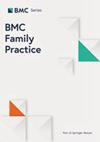Effect of GP visits in the compliance of preventive services: a cross-sectional study in Europe
IF 3.2
3区 医学
Q1 MEDICINE, GENERAL & INTERNAL
引用次数: 0
Abstract
Performing cardiovascular and cancer screenings in target populations can reduce mortality. Visiting a General Practitioner (GP) once a year is related to an increased likelihood of preventive care. The aim of this study was to analyse the influence of visiting a GP in the last year on the delivery of preventive services based on sex and household income. Cross-sectional study using data collected from the European Health Interview Survey 2013–2015 of individuals aged 40–74 years from 29 European countries. The variables included: sociodemographic factors (age, sex, and household income (HHI) quintiles [HHI 1: lowest income, HHI 5: more affluent]), lifestyle factors, comorbidities, and preventive care services (cardiometabolic, influenza vaccination, and cancer screening). Descriptive statistics, bivariate analyses and multilevel models (level 1: citizen, level 2: country) were performed. 242,212 subjects were included, 53.7% were female. The proportion of subjects who received any cardiometabolic screening (92.4%) was greater than cancer screening (colorectal cancer: 44.1%, gynaecologic cancer: 40.0%) and influenza vaccination. Individuals who visited a GP in the last year were more prone to receive preventive care services (cardiometabolic screening: adjusted OR (aOR): 7.78, 95% CI: 7.43–8.15; colorectal screening aOR: 1.87, 95% CI: 1.80–1.95; mammography aOR: 1.76, 95% CI: 1.69–1.83 and Pap smear test: aOR: 1.89, 95% CI:1.85–1.94). Among those who visited a GP in the last year, the highest ratios of cardiometabolic screening and cancer screening benefited those who were more affluent. Women underwent more blood pressure measurements than men regardless of the HHI. Men were more likely to undergo influenza vaccination than women regardless of the HHI. The highest differences between countries were observed for influenza vaccination, with a median odds ratio (MOR) of 6.36 (under 65 years with comorbidities) and 4.30 (over 65 years with comorbidities), followed by colorectal cancer screening with an MOR of 2.26. Greater adherence to preventive services was linked to individuals who had visited a GP at least once in the past year. Disparities were evident among those with lower household incomes who visited a GP. The most significant variability among countries was observed in influenza vaccination and colorectal cancer screening.全科医生出诊对遵守预防服务的影响:欧洲横断面研究
在目标人群中开展心血管和癌症筛查可降低死亡率。每年看一次全科医生(GP)与提高预防保健的可能性有关。本研究旨在根据性别和家庭收入情况,分析去年看全科医生对提供预防性服务的影响。横断面研究使用的数据来自 2013-2015 年欧洲健康访谈调查,对象是来自 29 个欧洲国家的 40-74 岁人群。变量包括:社会人口因素(年龄、性别和家庭收入(HHI)五分位数[HHI 1:最低收入,HHI 5:较富裕])、生活方式因素、合并症和预防保健服务(心脏代谢、流感疫苗接种和癌症筛查)。研究采用了描述性统计、双变量分析和多层次模型(第 1 层:公民,第 2 层:国家)。共纳入 242 212 名受试者,其中 53.7% 为女性。接受任何心脏代谢筛查的受试者比例(92.4%)高于癌症筛查(结肠直肠癌:44.1%,妇科癌症:40.0%)和流感疫苗接种。在过去一年中到全科医生处就诊的人更容易接受预防性保健服务(心脏代谢筛查:调整后 OR (aOR):7.78,95% CI:7.43-8.15;结肠直肠癌筛查 aOR:1.87,95% CI:1.80-1.95;乳房 X 线照相 aOR:1.76,95% CI:1.69-1.83;子宫颈抹片检查 aOR:1.89,95% CI:1.85-1.94)。在去年接受过全科医生检查的人群中,富裕人群接受心脏代谢筛查和癌症筛查的比例最高。与 HHI 无关,女性比男性接受更多的血压测量。无论 HHI 如何,男性比女性更有可能接种流感疫苗。流感疫苗接种的国家间差异最大,中位几率比(MOR)为 6.36(65 岁以下有合并症者)和 4.30(65 岁以上有合并症者),其次是结肠直肠癌筛查,中位几率比为 2.26。过去一年中至少看了一次全科医生的人对预防服务的依从性更高。家庭收入较低的人看全科医生的差异明显。各国在流感疫苗接种和结肠直肠癌筛查方面的差异最大。
本文章由计算机程序翻译,如有差异,请以英文原文为准。
求助全文
约1分钟内获得全文
求助全文
来源期刊

BMC Family Practice
医学-医学:内科
CiteScore
3.20
自引率
0.00%
发文量
0
审稿时长
4-8 weeks
期刊介绍:
BMC Family Practice is an open access, peer-reviewed journal that considers articles on all aspects of primary health care research. The journal has a special focus on clinical decision making and management, continuing professional education, service utilization, needs and demand, and the organization and delivery of primary care and care in the community.
 求助内容:
求助内容: 应助结果提醒方式:
应助结果提醒方式:


